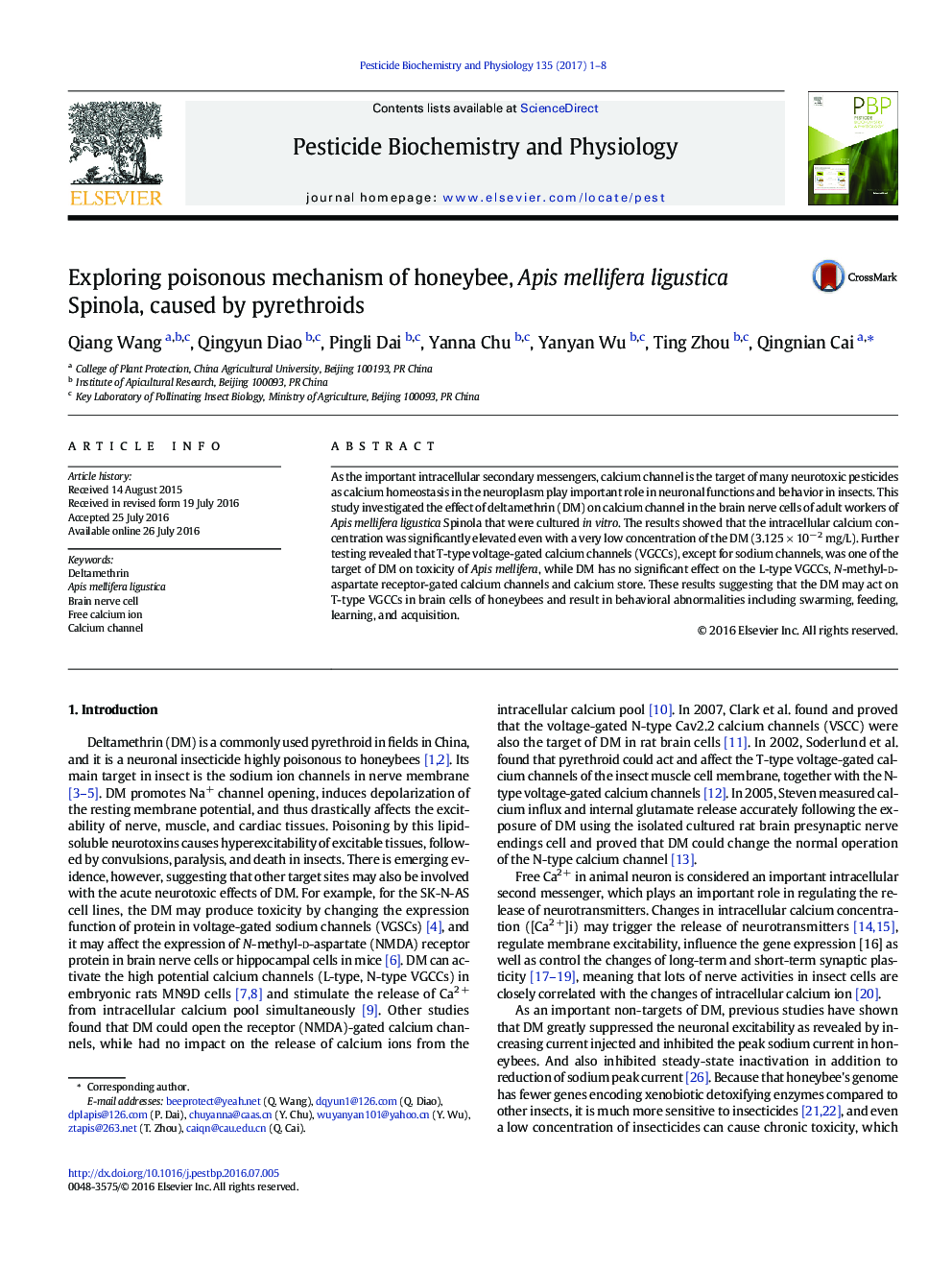| کد مقاله | کد نشریه | سال انتشار | مقاله انگلیسی | نسخه تمام متن |
|---|---|---|---|---|
| 5514869 | 1541764 | 2017 | 8 صفحه PDF | دانلود رایگان |

- Measurement method for calcium ion concentration in brain nerve cells of honeybee
- We examine changes of calcium ion concentration in brain nerve cells of honeybee.
- Key action site of Deltamethrin in bee brain nerve cells was found.
As the important intracellular secondary messengers, calcium channel is the target of many neurotoxic pesticides as calcium homeostasis in the neuroplasm play important role in neuronal functions and behavior in insects. This study investigated the effect of deltamethrin (DM) on calcium channel in the brain nerve cells of adult workers of Apis mellifera ligustica Spinola that were cultured in vitro. The results showed that the intracellular calcium concentration was significantly elevated even with a very low concentration of the DM (3.125 Ã 10â 2 mg/L). Further testing revealed that T-type voltage-gated calcium channels (VGCCs), except for sodium channels, was one of the target of DM on toxicity of Apis mellifera, while DM has no significant effect on the L-type VGCCs, N-methyl-d-aspartate receptor-gated calcium channels and calcium store. These results suggesting that the DM may act on T-type VGCCs in brain cells of honeybees and result in behavioral abnormalities including swarming, feeding, learning, and acquisition.
206
Journal: Pesticide Biochemistry and Physiology - Volume 135, January 2017, Pages 1-8